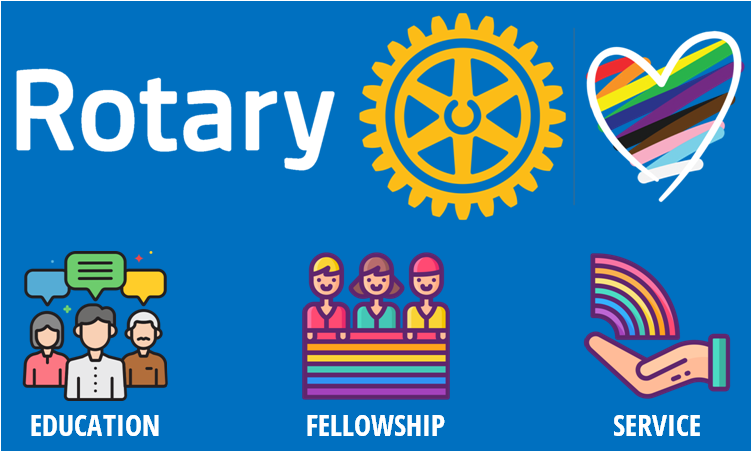
When it comes to true inclusion, everyday interactions with peers and leaders matter as much as organizational policies or formal processes.
There are some of the small steps you and your club can take to make Rotary more inclusive for people that ‘look’ a little different than the what most of us may consider a 'typical member'..
As various ideas, opinions and stories about Diversity, Equity and Inclusion (DEI) in Rotary have been shared, many of our leaders have been heard saying things like: “We’re a really decent club. We don’t have any bad people. So, we don’t have a problem. Right?” Or, “Why is Rotary doing something so political?” and “There are no gay people in my community!”
Such comments may not be malicious in origin or intent, but they come from a space of ignorance, and should be considered a teachable moment.
For Rotary to survive as an organization, it needs to be welcoming of everyone – no matter how they look or identify.
But while diversity, equity and inclusion have climbed the Rotary agenda over the past decade, many Rotary members across the world that are not white, older, cisgender and straight continue to face discrimination, discomfort, and even danger in some clubs. Thus, when it comes to true inclusion, everyday interactions with peers and leaders matter as much as organizational policies or formal processes.
Here are a number of ways to make your club and Rotary as a whole more inclusive for people that ‘look’ a little different but are just as valuable as any other member:
Start having conversations.
In order to understand the challenges that exist for people that “look” different, leaders at all level (club, district, zone, and international) should stay connected to what it means to be someone in that group. This means:
- Asking a local group to speak at your club
- Downloading and discussing some of the educational resources developed by the Rotary International membership team and other groups like the Rotary LGBT+ Fellowship at your club assemblies
- Contacting a group like the Rotary LGBT+ Fellowship to make a presentation at a club meeting.
- Set a meaningful public example.
Small gestures like putting a rainbow or the LGBT+ Fellowship’s rainbow heart at the bottom of your website, acknowledgment of country at the start of a meeting or using Rotary’s statement on diversity, equity and inclusion help and go a long way to make a bold and clear statement that we as Rotarians and Rotary clubs are accepting of everyone.
Support projects that address key issues for LGBTQ+ communities.
As people of action, we do amazing work to improve communities and the world. When you are considering your next project why not target an issue like:
- HIV/AIDS treatment and prevention and/or sexual health
- Addressing mental health issues and homelessness in LGBTIQ+ communities and people with a disability
- Preventing violence towards LGBTIQ+ people, other ethic groups, women and families
- Access to healthcare for certain people or groups in your community
Diversity, equity and inclusion is complex, but Rotary is making some great steps forward.
We have started to address gender, generational and cultural diversity. There are still many other aspects for us to discuss including LGBT+, disability, indigenous peoples and others, as well as, how these identities can intersect (for example, how someone can be both LGBTQ+ and disabled).
Our progress as an organization is exciting and people should be encouraged to reach out to groups like the Rotary LGBT+ Fellowship or other diversity-based groups in your own community, as well as, to leaders and district membership committees to continue the discussion.
